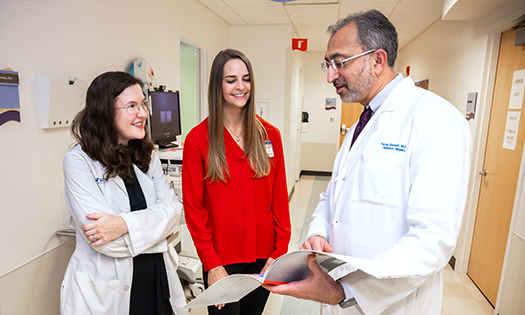A recent report from the Centers for Disease Control estimated that more than 11% of U.S. children between ages 3 and 17 have received an ADHD diagnosis. But ADHD is often overlooked by a child’s family and teachers because they don’t suspect that a treatable medical condition may be the root cause of disruptive behaviors.
In this Q&A, Candace Genest, Ph.D., Pediatric Neuropsychologist at Children’s Medical Center Dallas, part of Children’s Health℠, discusses how providers can help families recognize ADHD earlier so their kids can get the support and treatment they need – and why increasing the number of clinicians who provide behavioral therapy is important.
Why does ADHD get overlooked?
Families and teachers are often the first to notice when a child's behavior or ability to function changes abruptly. However, the dysregulated behaviors typical of kids with ADHD start very early so their families might think 'that's just how they are'. And these behaviors might not strike them as unusual since the condition is often hereditary and others in the family act similarly.
At school, the child often gets scolded or disciplined for misbehaving or not paying attention, but it’s important to stop and ask: Is there an underlying medical condition causing this? When a primary care provider hears that a patient is struggling with age-appropriate behaviors and tasks – like sitting relatively still, making friends or completing assignments – it’s a cue to screen for ADHD and consider a referral to a psychologist or therapist for a more thorough cognitive assessment.
What is the most effective way to manage ADHD?
Research continues to show that the most effective approach combines attention-enhancing medications and behavioral strategies. Most providers know how to teach families practical skills that can make a big difference like:
Creating predictable routines
Setting clear expectations
Breaking tasks down into discrete steps
Providing visual schedules so a child knows what to expect each day
Organizing the home and/or child’s room to limit distractions
Developing emotional regulation skills, like remembering to disengage, take a breath and zoom out from a situation
For preschool age kids, the focus should be on behavioral support. For elementary school-age children and beyond, the best outcomes come from a combined approach. There is a book titled “Pills Don’t Teach Skills,” by Jeff Hamilton that drives this point home. I often talk to parents about the interaction between medication and skill development. Medication can help a child’s brain focus, which gives them the bandwidth to learn how to organize and prioritize, and to better manage their body, behavior and emotions.
What is the growing need for treatment?
Though we’ve done a decent job of making sure medication is available, we have a severe national shortage of mental and behavioral health providers. This is particularly true for our youngest patients, those between the ages of 2 and 5.
We need providers who can take the time to teach executive functioning skills, emotional and behavior regulation skills, social skills and other attention support strategies. Having more providers offer this kind of coaching would really broaden the field of who we can refer families to. But this kind of comprehensive support takes time, and insurance reimbursements for it are low. Families face additional barriers like not having health insurance, out-of-pocket costs and difficulty finding providers accepting new patients. Inconvenient office hours and transportation to and from appointments are additional barriers for families.
ADHD is highly variable in how it affects people. Where do you start in developing a treatment plan?
ADHD always presents with more than just inattention and/or impulsivity. In addition to the medication management and behavior strategies noted above, we look at what is most disruptive to a child’s daily functioning. Is it sleep? Emotional regulation? Academic performance? Behavior regulation? Social skills? Something else? The key is to identify each patient’s most pressing needs. The treatment plan depends on the individual, but at the end of the day we still need to address the behavioral and neurobiological aspects of ADHD.
What’s new or promising in ADHD research?
While a bit dated at this point, there's some interesting research indicating that kids who’ve taken attention-enhancing medications show better brain connectivity five to 10 years down the line than those who didn’t. It’s not yet clear if this is because the medication helped the child’s whole system work better and improved their neural connectivity, or if the medication helped them get more out of their environment.
There are some exciting discoveries ahead with promising implications for treatment thanks to more sophisticated imaging data, advances in understanding microcellular processes (including the microbiome-gut-brain axis), advanced machine learning models, and the emerging ability to tailor treatments to individual neurobiology.
Children’s Health: A multidisciplinary and holistic approach for medically complex patients with ADHD
Treating ADHD – especially in medically complex patients – goes beyond addressing attention and focus. It can take specialists from a variety of disciplines to determine a child’s differential diagnosis. At Children’s Health, experts work together to evaluate all aspects of a child’s health, understand how ADHD affects them and develop highly individualized treatment plans. From developmental pediatrics to sleep studies to neurology to advanced diagnostics, Children’s Health offers expert, holistic care for toddlers, children and teens with complex ADHD.
Consider referring to a multidisciplinary medical center like Children’s Health when first-line treatments aren’t working for your patient, if they experience side effects from medication, if their behavior or function don’t improve or if you suspect co-occurring health conditions.


